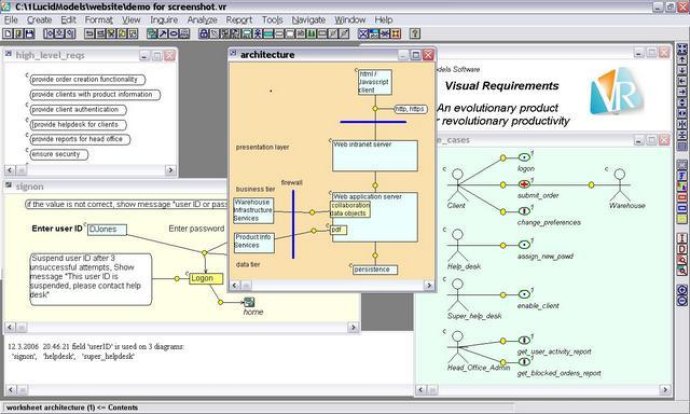VR is a free, low-risk tool for effective requirement development and management. With a visual and conceptual organization system, it offers size and effort estimation features, making it a versatile solution for teams.

One of the standout features of VR is its lucid and efficient information structures that allow for incredibly productive work. Even when designing a website, it's not uncommon to encounter situations where a single field has to appear on several screens. VR handles this effortlessly by keeping requirements related to specific fields in a centralized location. Updates to elements can be made once without worrying about duplicating the effort. Even if requirements belong to use cases, they can also appear in supplementary specifications without any hassle.
VR features simple yet effective functionality, such as building requirements as a set of linked diagrams that are easy to read and navigate. Users can present their product in multiple views like the concept view, use case view, user interface view, workflow view, and more. The tool also allows users to define use cases visually, create coherent intertwined structures with common elements, instantly search for concepts, data items, requirements, and more. Other features include analyzing models, such as locating orphan elements, comparing diagrams, tracing requirements, estimating size and effort, and generating reports using easy integration with Word and other tools.
VR is incredibly user-friendly right from the start, making it the ideal solution for individuals who are new to using software development tools. By using VR, individuals can significantly increase the productivity of their work while improving work product quality and process maturity. So whether you're building software or working on any project that requires detailed requirements, VR is the perfect tool to consider.
Version 1.4.8: N/A